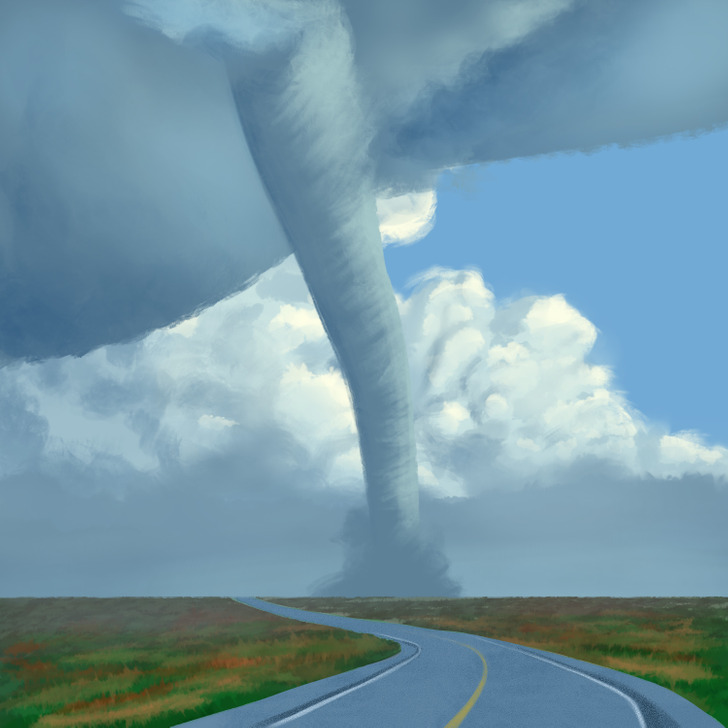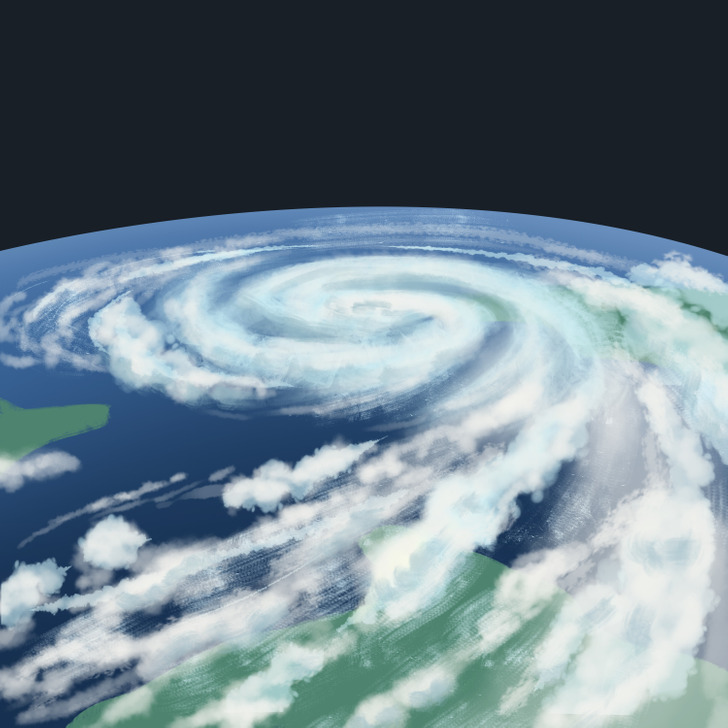The Differences Between a Tornado, Twister, Hurricane, and Typhoon

Tornado, twister, hurricane, and typhoon — these words are all used to name big storms. However, they differ in terms of formation, wind speed, and size.
5-Minute Crafts would like to tell you about what tornadoes, twisters, hurricanes, and typhoons are, and how they are different from each other.
What a tornado is

A tornado looks like a violently rotating column of air above the ground, the diameter of which can reach hundreds of feet. It occurs exclusively on land, usually during a severe thunderstorm, and lasts anywhere from a few seconds to half an hour.
Technically, a tornado is an atmospheric circulation system with a long funnel-shaped cloud that extends toward the ground and is made visible by condensation and debris. In other words, the rotating air funnel is invisible until it begins to collect water vapor, dirt, and debris.
A tornado is characterized by an intense updraft near the center with a wind speed of at least 40 mph. Because of this, it’s capable of lifting heavy objects, such as trees and cars.
What a twister is
A twister is another name for a tornado. It’s also a rotating air funnel above the ground that occurs on land during a severe thunderstorm.
What a hurricane is

A hurricane is one of the names for a tropical cyclone.
A cyclone is a large air mass that rotates around a strong center of low atmospheric pressure. The air in it circulates counterclockwise in the Northern Hemisphere and clockwise in the Southern Hemisphere. Cyclones can be extratropical, subtropical, and tropical. The latter is formed in the tropical regions of the planet. The air inside them is warm, which leads to the condensation of water vapor. Because of this, strong winds, heavy rains, and hurricanes are formed.
The name “hurricane” is used for tropical cyclones in the Atlantic Ocean, the Caribbean Sea, the Gulf of Mexico, and the center of the North and East Pacific. They can reach speeds of 74 mph or more.
Hurricanes are much bigger than tornadoes. The largest tornadoes are about 2 miles in diameter, while average ones are often much smaller. An average hurricane, in contrast, has a diameter of about 300 miles. In addition, a hurricane, unlike a tornado, doesn’t form on land, but over the ocean.
What a typhoon is
A typhoon is another name for a tropical cyclone. But unlike a hurricane, it’s used to refer to storms in the western and northwestern Pacific Ocean and the northern Indian Ocean.
A typhoon is as strong and destructive as a hurricane. The wind can also reach a speed of 74 mph or more, and the average funnel diameter is 300 miles.